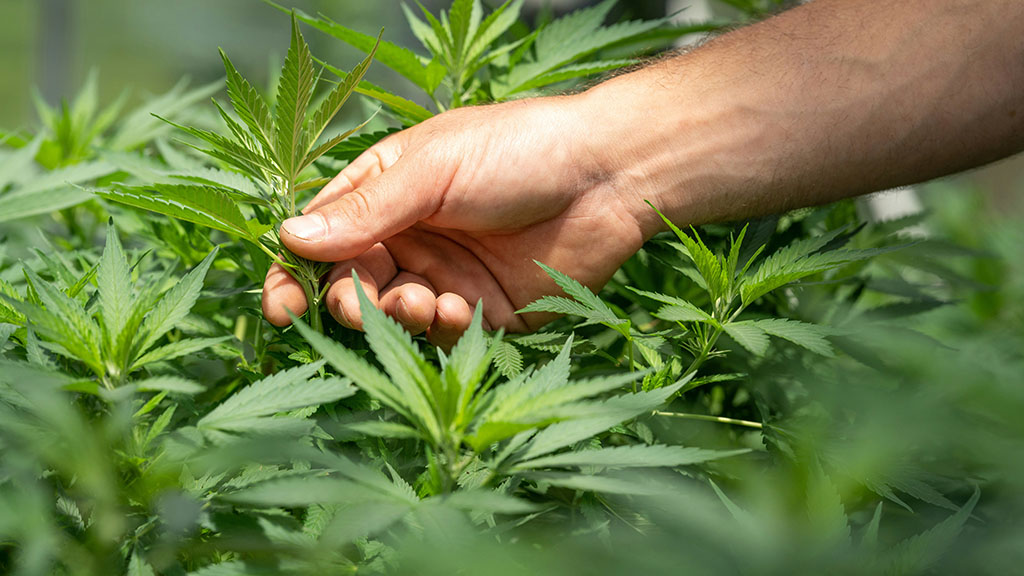Estimated reading time: 18 minutes
Table of contents
- Why Cannabis Compliance Systems Matter
- The High Cost of Non-Compliance in Cannabis
- Additional Risks of Non-Compliance
- Common Pitfalls That Undermine Cannabis Compliance
- How to Build Integrated Compliance Workflows
- Managing Multi-License and Multi-State Compliance
- Automation and Real-Time Monitoring in Cannabis Operations
- Compliance as a Competitive Advantage
- Leadership and Culture: The Backbone of Compliance Success
- Catalyst BC’s Perspective: Building a Scalable Compliance System
- How Catalyst BC’s Cannabis Consulting Team Helps Navigate Compliance
- Conclusion
- Establishing Cannabis Compliance Systems FAQs
- Additional Resources
- Free eBooks For Cannabis Business Success
- Latest Articles
Cliff Notes: Cannabis compliance systems for sustainable growth
Objective: Implement cannabis compliance systems organization-wide —rather than a standalone department—to minimize risk, avoid penalties, and enable sustainable growth.
Key Components:
- Cannabis Compliance Systems: Build unified, integrated platforms that connect inventory, sales, and regulatory reporting for real-time visibility and efficiency.
- Common Pitfalls to Avoid: Data silos, outdated cannabis SOPs, manual processes, and poor training increase the risk of regulatory violations.
- Workflow Integration: Embed compliance checkpoints into daily operations—across cultivation, processing, retail, and distribution.
- Multi-License/Multi-State Oversight: Create centralized systems that adjust for state-by-state rules while maintaining unified control.
- Real-Time Monitoring & Automation: Use technology to proactively manage compliance, reduce manual errors, and automate regulatory tasks.
- Compliance as a Competitive Advantage: Strong compliance builds trust with regulators, investors, and consumers—boosting brand equity and reducing risk.
- Leadership & Culture: Company culture and executive buy-in are critical to successful compliance implementation.
Partner with Catalyst BC’s industry-leading cannabis consultants to audit your current operations, integrate powerful compliance technologies, streamline cannabis SOPs, and build a scalable compliance system that protects your license and powers your growth.

Why Cannabis Compliance Systems Matter
Compliance in the cannabis industry is too often approached as a box-checking exercise or relegated to a single department or, in some cases, a single person. In reality, cannabis compliance must be woven into every aspect of operations – from seed to sale – to truly protect and propel a business forward. Treating compliance as an afterthought or a silo can lead to costly mistakes and operational inefficiencies. On the other hand, a “compliance-by-design” mindset – where regulatory adherence is built into workflows from day one – helps reduce drag on operations, minimize risks, and ensure long-term profitability.
The High Cost of Non-Compliance in Cannabis
Failing to comply with cannabis regulations doesn’t just result in paperwork headaches—it can lead to business-ending consequences. From steep fines and license suspensions to product recalls and legal battles, the cost of non-compliance is often far greater than the perceived burden of doing things right from the start.
Massachusetts
In Massachusetts, for example, a cultivator was fined $350,000 after state regulators discovered it had used banned pesticides on cannabis plants—then attempted to conceal the violation. This wasn’t just a regulatory infraction; it was a breach of consumer trust that jeopardized public health and the company’s license.
Ohio
In 2024, six Ohio cannabis companies were collectively fined $212,500 for engaging in unapproved advertising ahead of the state’s recreational cannabis launch. Violations included using the word “recreational” in marketing, erecting noncompliant signage, and promoting events—such as an ice cream truck at a dispensary—without required preapproval. One company was fined $150,000 alone for multiple infractions. The incident highlighted how even seemingly minor missteps in marketing can have major financial consequences.
New Mexico
In New Mexico, regulators revoked the licenses of two marijuana grow operations and imposed $1 million fines on each for numerous violations. Infractions included exceeding plant count limits, lack of inventory tracking, and unsafe conditions. These enforcement actions demonstrate the critical need for compliance in cultivation operations and the risks associated with regulatory breaches.
These are not isolated events. Fines for more minor issues like inventory discrepancies, inaccurate manifests, or improper labeling routinely range from $5,000 to $25,000 per incident. The financial exposure increases quickly when you scale those risks across multiple products, batches, or locations.
Additional Risks of Non-Compliance
The costs of non-compliance extend beyond immediate penalties. Losing a hard-won license can shut down operations overnight. Product recalls due to contamination or mislabeling are another expensive pitfall. A widespread recall means destroying or withdrawing products and incurring the labor and logistics costs of pulling items off shelves, issuing customer refunds, and managing public relations damage. In addition to the reputational hit, customers may lose trust and go elsewhere after a safety lapse. Investors or partners will think twice about associating with a company that can’t stay compliant.
In short, non-compliance is an existential threat. It’s not just the fines or enforcement actions; it’s the loss of future revenue from a tarnished reputation, the legal battles, and the operational chaos that follows a major violation. No wonder industry experts say investing in compliance is a proactive, strategic decision rather than a burdensome expense – an insurance policy for the business.
Common Pitfalls That Undermine Cannabis Compliance
Why do cannabis businesses still stumble on compliance, given the stakes? Often, it’s because compliance is treated as a disconnected duty rather than a core part of operations. Below are some common compliance pitfalls that undermine cannabis operators:
Disconnected Systems and Data Silos
Many operators use separate, non-integrated systems for inventory, sales, and state reporting, resulting in redundant data entry and frequent discrepancies. If your systems don’t “talk” to each other – for example, if your point-of-sale (POS) platform isn’t automatically syncing with the state’s seed-to-sale tracking database – it’s easy for something to slip through the cracks. Disjointed tools force your team to act as human middleware, wasting time and increasing error rates.
Inconsistent or Outdated SOPs
Standard Operating Procedures (SOPs) are the backbone of day-to-day compliance. When cannabis SOPs are incomplete, outdated, or applied inconsistently across departments, employees end up making their own rules. This can lead to critical steps being skipped or done incorrectly. For instance, gaps will emerge if cultivation, processing, and retail have different protocols for tracking and reporting product data. SOPs should be living documents kept up-to-date with regulatory changes and enforced uniformly across the organization.
Manual Processes & Human Error
Processes that rely on manual data entry or calculations inevitably produce mistakes. Handwritten logbooks, spreadsheet inventory tracking, or manually checking customer purchase limits are accidents waiting to happen. People get busy or fatigued and can transpose a number or misread a label – and what seems like a small error can trigger a regulatory violation. Automation and system controls, when properly implemented, act as a safety net to catch or prevent those “oops” moments before they become reportable incidents.
Poor Training and Awareness
A compliance system is only as strong as those running it. Suppose front-line staff aren’t trained on the why and how of regulations. In that case, they may unknowingly break the rules – like a budtender who doesn’t realize a medical patient is “looping” purchases or a packager who isn’t clear on exact labeling requirements. Neglecting employee training creates an environment ripe for minor mistakes that can lead to hefty penalties. Simply put, compliance will suffer if your team doesn’t understand the regulations or your internal procedures.
By recognizing these pitfalls, cannabis entrepreneurs can take proactive steps to shore up their weaknesses. The key is to move from a piecemeal approach to a systems approach, turning compliance from a necessary headache into an integral part of the business’s daily operations.
How to Build Integrated Compliance Workflows
The solution to many compliance challenges is integration. Rather than viewing compliance as a separate box to check, leading cannabis companies bake compliance into their workflows at every level. This means your technology, processes, and people are all aligned to enforce and enable compliance automatically as work gets done.
Technology Infrastructure
Start with your technology infrastructure. Every cannabis operation – whether a single dispensary or a multi-state enterprise – should have a unified system of record that connects inventory management, sales transactions, and regulatory reporting. For example, a robust dispensary POS or enterprise resource planning (ERP) platform can automatically record each sale, adjust inventory counts in real-time, and push the required data to the state’s tracking system without manual intervention. When all data flows through one integrated system, there’s far less room for conflicting information or “forgotten” records. It also means that if regulators or auditors request information, you can generate accurate compliance reports with a few clicks instead of scrambling to reconcile spreadsheets.
Full-Cycle Integration
Integration isn’t only about software – it also applies to how teams collaborate. Cross-functional workflows should be designed so that compliance checks are naturally embedded. For instance, when your cultivation team transfers product to your manufacturing department, the inventory system should require entering all relevant testing and manifest information before the transfer is completed. By designing workflows that inherently include such compliance steps, you remove the burden of remembering compliance – it just happens as part of the routine process.
This integrated approach is especially critical for vertically integrated businesses and operators holding multiple license types. In a multi-license operation, the product might move from a grow facility to a processing lab to a retail store, all within the same company. Without a seamless compliance system, each handoff introduces risk – a miscommunication or delay in one department could result in untracked or improperly documented cannabis moving through your internal supply chain. By contrast, a unified seed-to-sale compliance system ensures every handoff is logged, every gram is accounted for, and every department works from the same playbook. The compliance system becomes the connective tissue between cultivation, manufacturing, distribution, and retail.
Managing Multi-License and Multi-State Compliance
As cannabis businesses scale up, compliance only grows more complex. The regulatory burden multiplies if you expand into multiple states or add new license types (say, launching a cultivation facility alongside your retail stores). Each state has its own rules and idiosyncrasies – something permissible in one market might be prohibited in another. Vertically integrated and multi-state operators (MSOs) need a unified compliance strategy tailored to each jurisdiction while still managed under one overarching system.
A common mistake is allowing each facility or state operation to handle compliance in its own siloed way. This fragmentation leads to uneven standards and oversight blind spots. Instead, smart operators establish centralized compliance oversight that harmonizes policies and systems across all locations while accounting for local differences. That might involve deploying a single technology platform capable of multi-state compliance configurations or at least consolidating data from different systems into a central dashboard that your compliance team can monitor.
Another crucial component of multi-license compliance is internal auditing and self-assessment. With so many moving parts, it’s essential to regularly audit each segment of your operation – from cultivation record-keeping and lab results to dispensary sales logs – to ensure nothing is slipping through the cracks. Companies that treat compliance as a system will schedule routine internal audits (or engage external consultants) to catch issues before regulators do.
Automation and Real-Time Monitoring in Cannabis Operations
One of the biggest advantages of treating compliance as a system is the ability to leverage real-time monitoring and automation. In a fast-paced industry like cannabis, real-time data isn’t a luxury – it’s a necessity for staying compliant without slowing down operations.
Inventory management
Consider inventory management if your inventory counts update in real-time with each sale or transfer, your team can catch and reconcile discrepancies immediately rather than discover a shortfall weeks later during a monthly audit. Automated alerts can be set to flag if a dispensary’s inventory deviates from what the state’s track-and-trace system shows, allowing you to investigate and correct the issue before it becomes a regulatory problem. Real-time visibility into key metrics also helps identify anomalies that might indicate a compliance risk.
Automation
Automation further reduces the compliance burden on your staff. Routine tasks like compiling reports, verifying customer IDs, calculating taxes, or enforcing purchase limits can be handled by software rules. A well-configured system will prevent a cashier from completing an over-limit sale or automatically flag an expired patient recommendation without relying on the employee to catch it. This prevents violations and frees up your team to focus on customers and operations rather than paperwork. One industry guide notes that leveraging automated systems and data analytics can significantly enhance compliance while improving operational efficiency.
Synergy in Technology
The result of real-time monitoring and automation is greater accuracy with less labor. Instead of a compliance officer (or an entire team) manually double-checking logs and chasing down errors after the fact, much of the compliance assurance happens in line as transactions occur. It’s the difference between having a car with active collision-avoidance technology versus one that only records the crash data after an accident – the former helps you avoid incidents in the first place. Modern compliance systems should prevent mistakes and maintain a complete record for when you need it.
Compliance as a Competitive Advantage
Adopting a systemic approach to compliance isn’t just about avoiding trouble – it can actually propel your business forward. In a crowded market, strong compliance can be a competitive advantage on multiple fronts.
Regulatory Inspections and Audits
First, consider regulatory inspections and audits. Businesses with organized records, integrated systems, and an authentic culture of compliance tend to breeze through inspections much more smoothly than those scrambling to pull together paperwork. Impressing inspectors with a well-run operation can lead to quicker audits and fewer penalties. It also builds goodwill; regulators know which operators they can trust to play by the rules consistently.
Growth Opportunities
Next, think about growth opportunities like licensing and fundraising. Applicants often must detail their compliance programs and track record when applying for new licenses (especially in competitive or merit-based states). A reputation for compliance excellence – no violations, clean audits, robust training – can set you apart from other applicants by showing you run a tight ship. Similarly, investors and lenders conduct extensive due diligence before backing a cannabis business. Companies with strong compliance records present lower risks and higher long-term sustainability to investors, making them more attractive investment targets. In an industry still fighting stigma and strict oversight, being known as a company that prioritizes safety, quality, and regulatory adherence can differentiate your brand in the eyes of consumers and regulators alike.
Today’s consumers and patients demand assurance that their products are safe, properly labeled, and produced by companies that follow the rules. Businesses that can credibly market their compliance commitment – for instance, by highlighting rigorous testing and quality controls – often build greater customer trust and loyalty. Consistently compliant operations also deliver higher product quality with fewer recalls, further strengthening brand reputation.
Positive Work Culture and Proactive Employees
Lastly, when compliance runs smoothly, it creates positive ripple effects company-wide. Efficient compliance systems reduce waste (for example, no more destroying inventory due to preventable mistakes), improve product consistency, and create a more stable work environment. Employees aren’t thrown into panic mode whenever an inspector arrives, and management can spend more time on strategy instead of damage control. A robust compliance infrastructure gives you peace of mind to focus on innovation and growth rather than constantly looking over your shoulder for the next potential violation.
Leadership and Culture: The Backbone of Compliance Success
Even the best systems and procedures will falter if people aren’t on board. That’s why leadership and company culture form the backbone of a successful compliance system. Compliance-by-design starts from the top: when leadership treats compliance as non-negotiable and worth investing in, that attitude cascades down to every manager and employee.
Set Expectations and Lead by Example
Leadership’s role is to set expectations, allocate resources, and lead by example. If founders or executives are seen bending the rules “just this once” to boost sales or cut costs, it undermines the compliance program. Instead, top management should consistently communicate the importance of compliance (in company meetings, memos, one-on-one discussions) and provide the budget and tools needed for robust compliance. Celebrate compliance wins just as you would hitting a revenue goal – for instance, if your team passes a surprise inspection with flying colors or goes a year with zero violations, call that out. This reinforces that compliance is valued, not just a necessary evil.
Building a compliance-focused culture also means empowering employees at all levels. Encourage a mindset where every employee “owns” compliance in their role rather than assuming it’s someone else’s problem. Staff should feel responsible for following procedures and empowered to speak up about potential issues. Establishing a blame-free feedback loop—where workers can report near misses or compliance gaps without fear of punishment—helps catch small problems before they escalate. When people are unafraid to raise concerns, minor issues can be fixed long before they become major violations.
Training and Education
Training is a huge part of cultivating this culture. Initial onboarding for every new hire should instill the compliance fundamentals relevant to their job, and ongoing education is just as important. Regulations and internal policies can evolve quickly, so regular refreshers and updates (even quick team huddles when a new rule takes effect) will keep everyone informed. Consider interactive training sessions or scenario-based drills to reinforce concepts in a practical way. Remember that what might seem like a small “human error” can result in fines or even the loss of a license, so attention to detail and following procedures must become second nature for your team.
Taking Ownership
Finally, while compliance is everyone’s responsibility, appointing dedicated compliance leadership or champions within the organization is wise. Depending on your size, this could be a full-time compliance officer or managers in each department who act as compliance point people. Their job is to stay on top of regulatory changes, coordinate audits, and coach teams on best practices. Crucially, these leaders should be seen as coaches and resources – not just enforcers. The goal is for employees to view compliance as a shared mission rather than something policed by “the compliance department.” When leadership, culture, and individual accountability align, your compliance system becomes part of the company’s DNA.
Catalyst BC’s Perspective: Building a Scalable Compliance System
At Catalyst BC, we’ve seen firsthand that the most successful cannabis operators treat compliance as an ongoing system to optimize, not a one-time task to finish. Our team has supported clients ranging from startup dispensaries to multi-state cultivators in building scalable, compliant infrastructure and workflows tailored to their needs. The key takeaway from our experience is that there’s no one-size-fits-all solution. Each business must develop a compliance program that fits its operations yet adheres to the universal principle of embedding compliance into every function.
How Catalyst BC’s Cannabis Consulting Team Helps Navigate Compliance
We begin by helping clients conduct a thorough compliance audit of their current processes, systems, and potential weak links. Often, this reveals hidden inefficiencies – like duplicate data entry between systems or communication breakdowns between departments – that pose compliance risks and drag down productivity. From there, we work on designing improved workflows that close those gaps. This could involve implementing new technology (or better configuring existing software), updating SOPs, training staff on best practices, and establishing stronger internal oversight. We also prioritize adaptability – regulations evolve constantly, so a compliance system must be nimble and ready to adjust when rules change. By building flexibility into compliance programs (for example, using easily update-able SOP templates or configurable software settings), we help clients stay ahead of new requirements without significant disruptions.
Optimized compliance should streamline operations, not hinder them. Done right, compliance-by-design reduces redundancies and firefighting, ultimately protecting profitability. Clients who integrate compliance into their daily operations experience smoother audits, fewer costly mistakes, and greater operational efficiency than those who approach compliance reactively. In other words, a proactive compliance system isn’t just about avoiding fines – it’s about building a strong foundation for growth.
Conclusion
Compliance doesn’t have to be a headache or a hurdle. By viewing cannabis compliance as a system rather than a silo, you position your company not only to avoid penalties but to excel. Integrating compliance into every level of your operation – through unified technology, robust processes, real-time monitoring, and a culture of accountability – reduces operational drag and safeguards your hard-won licenses and reputation. In an industry where the rules are many, and the margin for error is slim, this integrated approach is both prudent and empowering. It transforms compliance from a constant source of anxiety into a competitive strength that supports your growth.
Ready to strengthen your compliance infrastructure? Catalyst BC’s expert consultants are here to help. We offer comprehensive compliance audits and tailored solutions to fortify your operations without sacrificing efficiency. Don’t wait for an inspector to find the weak link in your chain – take a proactive stance.
Contact Catalyst BC today to explore how we can build a scalable, compliance-by-design system that protects and propels your cannabis business.
Establishing Cannabis Compliance Systems FAQs
A cannabis compliance system integrates software, SOPs, and workflows to automatically manage regulatory requirements across all operations.
Non-compliance can result in massive fines, license suspensions, product recalls, and long-term brand damage.
Disconnected data systems, manual tracking, outdated cannabis SOPs, and poorly trained staff are among the top culprits.
Automation reduces human error by enforcing limits, generating reports, and syncing inventory with state tracking systems in real time.
Leadership must prioritize compliance culturally and operationally—allocating resources, setting standards, and modeling behavior.
Use centralized oversight, state-specific configurations, and unified platforms to streamline and tailor compliance by jurisdiction.
Yes. A cannabis consultant can audit current systems, improve SOPs, train teams, and implement tech integrations for scalable compliance.
Fines can reach $1 million or more, but hidden costs like lost licenses, legal fees, and reputation damage often hurt more.
It allows companies to catch discrepancies immediately, ensure reporting accuracy, and minimize surprises during audits.
Clean audits, safe products, and strong systems attract regulators, investors, and customers—helping businesses grow with confidence.
Additional Resources
Free eBooks For Cannabis Business Success
Latest Articles
- Utah Medical Cannabis Pharmacy License Applications Open for 2025: Eligibility, Deadlines, and RequirementsThe Utah Department of Agriculture and Food (UDAF) has officially launched the first application period for two independent medical cannabis pharmacy licenses, running from July 1 through July 31, 2025. Originating from House Bill 54, passed during Utah’s 2025 legislative session, these new pharmacy licenses aim to broaden medical cannabis access in medically underserved areas across the state.
- Cannabis Startup Costs: From Licensing to ProfitabilityStarting a legal cannabis business isn’t just about getting a license—it’s about building a profitable, compliant, and sustainable operation in one of the world’s most capital-intensive and regulated industries. Many entrepreneurs enter this space with many goals, good intentions, and passion, but ultimately fail because they underestimate the cost, complexity, experience, and time required to turn a cannabis license into a thriving business.
- Cannabis License Pitfalls: How to Avoid Common Cannabis Licensing MistakesAs new adult-use programs launch, many entrepreneurs are eager to start growing, processing, or selling cannabis. Excitement runs high, but the industry’s heavy regulations and complex operations can quickly overwhelm even experienced business owners. Common mistakes include underestimating compliance requirements, rushing facility design, skipping proper procedures, and more.
- Maximizing Your Minnesota Cannabis Microbusiness or Mezzobusiness LicenseMinnesota’s new adult-use cannabis law allows microbusinesses (one store, up to 5,000 sq ft indoor, ½ acre outdoor) and mezzobusinesses (up to 3 stores, 15,000 sq ft indoor, 1 acre outdoor) to cultivate, manufacture, sell, and transport cannabis under one license. These vertically integrated licenses offer flexibility, but also come with complex state rules.
- The Recipe for a Top-Tier Cannabis DispensaryOperating a highly reviewed, top-performing cannabis dispensary takes more than simply stocking product and unlocking the doors. It requires operational discipline, regulatory expertise, top-tier customer service, dynamic merchandising, and a culture of accountability and community. With the cannabis industry continuing to expand—and regulations constantly evolving—success is defined by how seamlessly a dispensary integrates compliance, product curation, staff training, and marketing into day-to-day operations.
- Minnesota Lottery Results: June 5 Cannabis License Drawings and What’s NextThe Minnesota Lottery for cannabis business licenses reached a pivotal milestone on June 5, as the Office of Cannabis Management (OCM) conducted randomized drawings for select license types. These lotteries were open to both social equity applicants and general applicants vying for limited licenses to operate as cultivators, manufacturers, and mezzobusinesses. Additionally, a separate lottery was held exclusively for social equity applicants seeking a retail cannabis license.











